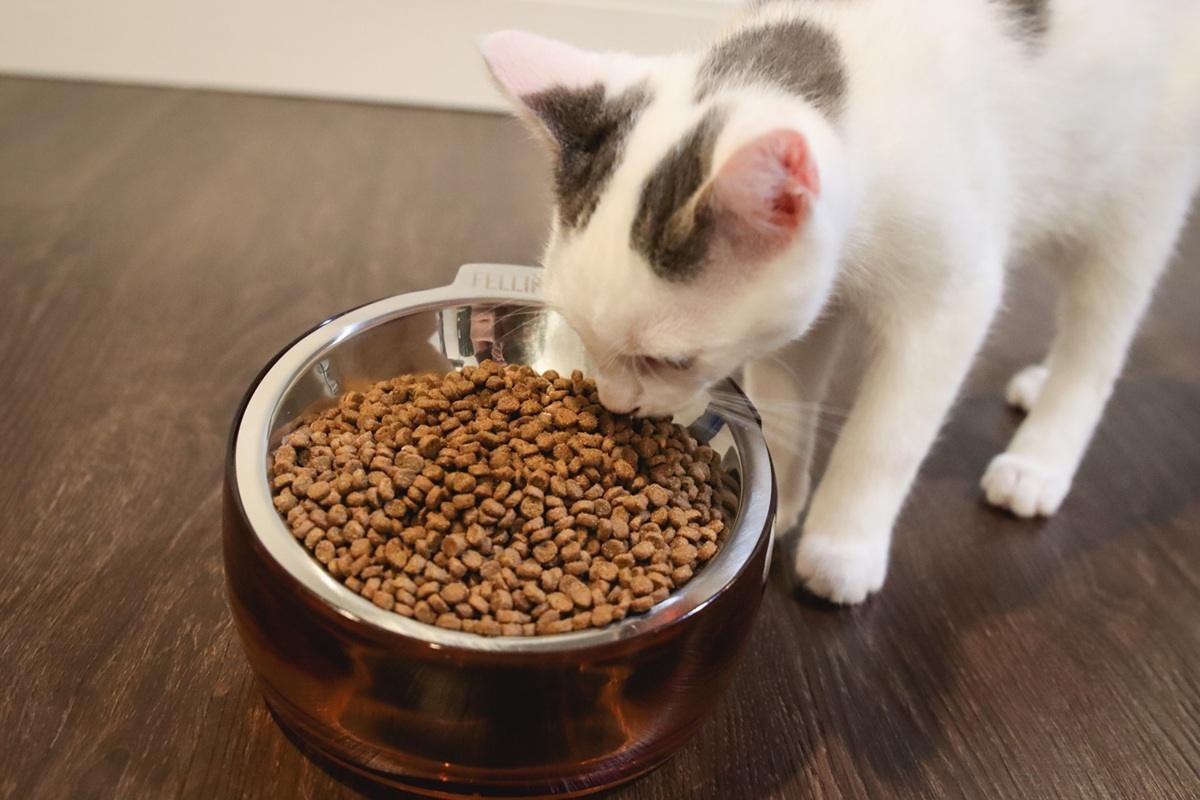Looking after a kitten involves making numerous decisions, especially when it comes to their diet. Navigating the pet food aisle can be overwhelming. This guide provides all the essential information about introducing dry food to your kitten.
Kitten vs. Cat Food: Understanding the Nutritional Differences
Caring for kittens is demanding due to their unique nutritional needs compared to adult cats. The balance of protein, carbohydrates, and fats in kitten food differs significantly from adult cat food. Incorrect feeding can negatively impact a kitten’s growth and development.
Kittens undergo rapid growth during their first year, requiring specialized nutrition. Therefore, kittens should consume kitten food until they reach at least 12 months old.
An exception to this rule is Maine Coon cats, who typically reach skeletal maturity between 18 and 24 months. They need a kitten-specific diet for a longer period to support their extended growth phase.
Kittens require a reliable energy source due to their rapid growth and high activity levels. They need more fat and fatty acids than adult cats to support their development. As obligate carnivores, cats need meat to survive. Kittens need vital amino acids, such as lysine, arginine, and methionine, from a high-quality diet.
Transitioning to Dry Food: A Week-by-Week Guide
Newborn kittens should exclusively drink their mother’s milk for the first four weeks to receive colostrum, which boosts their immune system. Orphaned kittens need kitten formula, avoiding puppy or human formulas, which lack necessary nutrients.
During weaning, around four weeks of age, kittens should stay with their mother, supplementing with her milk as they learn to eat solid food. If the mother isn’t available, formula should be regularly provided.
At four weeks, introduce small amounts of wet kitten food and water or kitten milk. Mix the milk with wet food to create an easily swallowable gruel. Initially, kittens might play with the food before eating it.
Wet food is recommended as the first solid food due to its soft texture, accommodating newly erupting teeth. Wet food’s stronger smell also attracts kittens and encourages them to try it.
Around 5 to 6 weeks, gradually add dry food to the wet food. Soaking the dry food makes it softer and more palatable. Kittens at this age usually adapt well to dry food.
By 6 to 7 weeks, reduce wet food and offer primarily dry kitten kibble, if desired. Kittens should be familiar with the food and eat it easily by this point.
Kittens should have constant access to food to graze and obtain enough calories. This free-feeding method is preferred by cats. Always provide fresh water or kitten milk.
By 7 to 8 weeks (two months old), kittens can eat mostly dry kitten food. It may require some experimentation to find a suitable food. Different kittens have different flavor and texture preferences.
Choose a food that suits your kitten and stick to it. Monitor your kitten’s weight gain to ensure they receive enough nutrients and grow appropriately. Your veterinarian will monitor this at each visit.
Wet vs. Dry Food: What’s Best for Your Kitten?
Both wet and dry food are safe for kittens. Most kitten food brands offer both versions. Each has pros and cons to consider.
Very young kittens need wet food because they cannot chew dry food well with immature teeth. Without access to soft food, newly weaned kittens might not get enough nutrients for proper development.
If feeding wet food, offer it at least four times daily to ensure adequate calorie intake. Dry food can be left out for grazing, but monitor consumption.
Ensure other cats don’t steal kitten food, as kitten formulas are tastier than adult formulas.
Can Kittens Eat Only Dry Food?
Once a kitten can chew dry kibble effectively, it’s acceptable to feed them solely dry kitten food, provided it’s specifically formulated as a kitten diet. Newborn kittens cannot eat dry food; they need milk replacer formula until four weeks old. The most important factor is the quality of the food.
Conclusion: Choosing the Right Diet
Selecting the right diet for your kitten can be challenging due to the many available options. Feeding dry food is perfectly acceptable, as is wet food, or a combination. As long as the diet provides adequate fat, protein, and amino acids, your kitten will thrive and grow into a happy, healthy adult cat.
Frequently Asked Questions
At What Age Can a Kitten Eat Dry Food?
Most kittens aged 5 to 8 weeks have teeth strong enough to chew dry kibble.
How Do You Introduce Dry Food to Kittens?
Introduce any food changes gradually. Mix a small amount of dry food with wet food or kitten milk. Slowly increase the amount of dry food each day as your cat shows interest, until it makes up the majority of the food. Then, reduce the wet food until your cat eats 100% dry food.
Do Kittens Need Wet and Dry Food?
There are no strict rules. Both have benefits, and the choice often depends on the cat’s preference and the household’s convenience.
